Rose The June Birth Flower
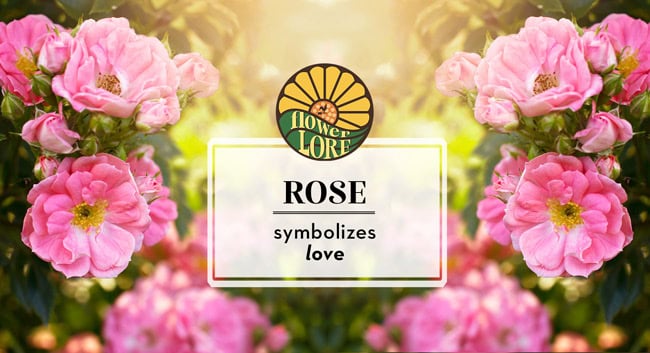
Rose, the June birth flower, is perhaps the most famous flower in all of botany. But why is it regarded as the go-to symbol for love, how is it rooted in folklore around the globe, and what’s the difference in meaning between pink roses and the other color varieties? Discover what lies beneath this traditional beauty, including its odd origin story, and helpful growing tips. Plus, we explore the June birth month flower alternative, honeysuckle. Jump to Rose Meaning
About Rose
The word “rose” evokes thoughts of glorious full blooms, rich deep fragrances, and passion—both for the flower itself and because of its common symbolism. Today, there are roughly 300-350 Rosa flower species, with more than 10,000 types, depending on how individual plants are classified.
All types are commonly referred to as roses. Unlike many other flowers, there is no other overall name for these stunning woody perennials other than the “Queen of Flowers,” though there are many individual common names for distinct varieties of roses.
Roses evolved 33-23 million years ago in the northern hemisphere, and they are found wild in North America, Europe, and Asia. All roses are typically colorful, highly fragrant, deciduous plants with oval-shaped serrated leaves. Many roses have thorns, which are actually “prickles” in botanical terminology, which are hard, sharply pointed outgrowths of the stem. Depending on the variety, roses can be shrubs or bushes, climbing or trailing vines, or even dwarf or miniature plants.
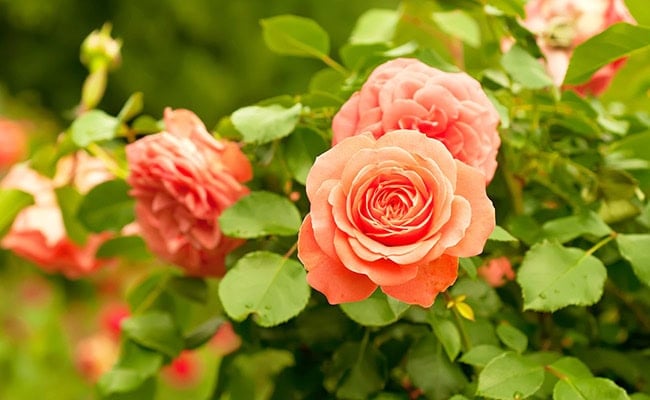
There are three types of roses generally recognized today:
- Wild (or species) roses: Naturally evolved plants and do not actually look too similar to florist shop roses, but they do come in classic pink shades and showcase 4-8 lovely petals.
- Old garden roses: Historically cultivated rose varieties that were first introduced prior to 1867, and are often more fragrant and hardier than newer roses.
- Modern garden roses: Introduced after 1867, these roses often showcase larger blooms, but may sacrifice fragrance. These newer variations may also not yet have developed the same resistance to diseases and pests as older rose varieties.
There is no one specific, exact type of rose that is formally known as the June birth flower, but during the month of June in the northern hemisphere, many different rose variations are in the full, glorious bloom. This makes them ideal as a symbol for the month and to celebrate the beauty of early summer.
Related Product: June Birthstone – Moonstone Necklace
Rose Symbolism
While the fossil record, history of floriculture, and generations of rose lovers have helped us know the natural origin of these beautiful blooms, ancient legends have much more fantastical beginnings for the rose.
According to Greek mythology, Chloris, the goddess of flowers, breathed life into a woodnymph which created the rose. The god of plant life, Dionysus, then gave the bloom its heady scent, and Aphrodite, the goddess of beaty, named the flower after her son, Eros, the god of love and desire. In Roman mythology, the same origin story is told but with the Roman variations of the same gods and goddesses—Flora, Bacchus, Venus, and Cupid.
Another Greek origin of the rose associates the boldly red flower with the tears of Aphrodite and the blood of her lover, Adonis, while some Christian origin legends associate the red rose with the blood of Christ, while white roses are the tears of the Virgin Mary.
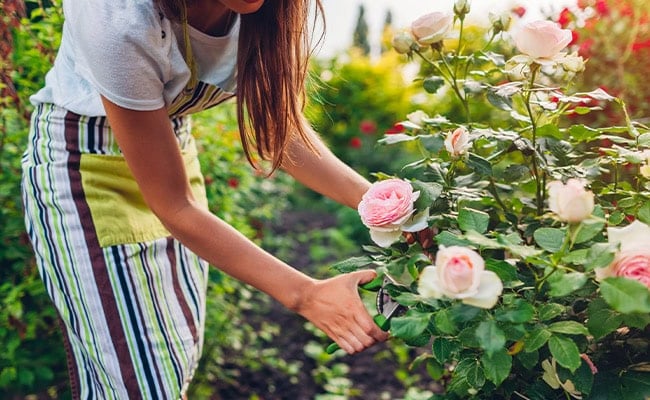
What Does Each Rose Color Mean?
The colors of roses, in fact, lend much to the symbolism and meaning of this beautiful flower beyond its origins. In the language of floriography—with each type of flower and individual flower colors having a unique meaning—roses mean love overall, but different colors represent different kinds of love along with other emotions and expressions.
- Classic red roses: Passionate, romantic, true love and devotion.
- Dark red roses: Intense passion, mourning.
- White roses: Motherly love, divine love, innocence, youth, purity, sympathy.
- Yellow roses: Friendly love, platonic caring, sympathy.
- Pink roses: Young love, innocent crush, femininity, gratitude.
- Peach roses: Friendly love, gratitude.
- Orange roses: Exciting passion, new love, creativity, pride.
- Purple roses: Enchanting love, royalty.
- Green roses: Freshness and new love, hope, fertility.
- Blue roses: Hidden love, mystery.
- Black roses: Mourning, lost love.
Any questions? Contact [email protected]
It should be noted that there are no green, blue, or pure black roses that exist in nature. Green and blue flowers are dyed, as are pure black roses. Some very dark shades of red and burgundy do exist, however, and can be taken as black roses, especially as buds.
Rainbow roses are also a popular dyed rose, with vibrant colors on different petals. These flowers can mean just about anything the giver or recipient may want but often have a more playful and energetic vibe such as joy and happiness. Furthermore, any mixed bouquet of different colored roses can represent not only the combined meanings of the different hues but also a sense of unity as the colors blend together for a lovely arrangement.
Rose Symbolism Around The World
Rose symbolism and meaning goes far beyond love and romance. In fact, Greek mythology continues to give the rose a secret meaning even today.
After its creation by the gods, Eros took a rose and gave it to Harpocrates, the god of silence, to ensure he would keep the gods’ secrets and not share them with mortals, particularly the secrets of Aphrodite. This association between roses and secrecy may be seen in historical carvings in courtrooms, council chambers, Catholic confessionals, and other locations where discretion is expected. If a rose isn’t carved into the lintels or furnishings, it may be part of a plaster ceiling decoration or a real rose may be placed in the room or hung from the ceiling for all to see and note the expected confidentiality. This is the origin of the New Latin phrase, sub rosa, meaning secrecy.
In addition to its mentions in Christian mythology, roses are also mentioned in other faiths, particularly Islam, Buddhism, and Confucianism, often with similar associations. For example, in Islam, the rose is said to represent both the Prophet Muhammad as well as love. In ancient Egypt, roses were associated with the goddess Isis and often used in funeral rites. Archeologists have even found roses in ancient tombs as part of mummification.
The rose is the symbolic flower of the fifteenth wedding anniversary, while the yellow rose specifically is associated with the fiftieth wedding anniversary. Of course, roses are an ideal anniversary gift for any year with their connections to love, especially for June anniversaries. June is one of the most popular months for weddings, and roses are the most popular flower for wedding bouquets!
Psst … Planning a wedding? See Farmers’ Almanac Best Days to Get Married.
It is no surprise that a flower as widespread and recognizable as the rose has been used for many symbolic purposes, especially for heraldry and insignias. The rose is featured in some way on dozens of coats of arms, including for Bournemouth, Calgary, Finland, Grenada, Montreal, and Saint Lucia, among many other cities, noble houses, and royalty.
Similarly, the rose is the official state flower of Iowa, North Dakota, Georgia, New York, Oklahoma, and Washington, DC, as well as the official provincial flower of Alberta, Canada.
Roses Of The Rich And Famous
It isn’t just ancient cultures and nobility that have venerated June’s birth flower, the rose. These flowers continue to be popular among celebrities in more recent history and into our modern culture.
Cleopatra VII (Thea Philopator) was said to favor roses, wearing them for public appearances so her subjects would associate her reign with the sweet-smelling bloom. Centuries later, Josephine Bonaparte, wife of Napoleon, cultivated an extensive rose garden believed to have showcased more than 250 distinct types of roses.
In the United Kingdom, roses have long been associated with noble houses and royalty. White roses were the favorite of Eleanor of Provence, wife of King Henry III in the mid- to late 1200s, as well as of Richard, Duke of York two centuries later in the mid-1400s. Because of heraldry with the principle houses, roses became highly symbolic for the civil wars surrounding the English throne from 1455-1487, which are commonly known as the Wars of the Roses. Even today, roses are still associated with the British monarchy with special cultivars named for many royal figures. For example, the Queen Elizabeth rose was introduced in 1954 in honor of the queen’s coronation, and additional roses have been named for Princess Anne, William and Catherine, Princess Alexandra of Kent, Queen Victoria, Diana Princess of Wales, Princess Alice, Duke of Edinburgh, and more.
Today, dozens and dozens of rose cultivars are named for celebrities and notable figures who may have royal stature in society, even if they don’t have official royal titles. Julia Child, Barbra Streisand, Bing Crosby, Elizabeth Taylor, Marilyn Monroe, Abraham Lincoln, Dolly Parton, Freddie Mercury, Mozart, Caesar, Leonardo da Vinci, and countless other celebrities and powerful personalities have roses named for them.
Roses In Art And Literature
It is no surprise that roses have long been favorites in art, literature, poetry, songs, and more. There are innumerable still life photographs of roses and rose bouquets, but roses have been painted in master works by Van Gogh, Renoir, and others. See Van Gogh’s “Vase with Pink Roses” here.
In literature, roses have had memorable mentions in the works of Oscar Wilde, Shakespeare, Robert Burns, William Faulkner, and Emily Dickinson. Few can forget the iconic line mentioning the rose in Romeo and Juliet – “A rose by any other name would smell as sweet” and many other stunning and popular works reference these flowers.
For more modern tastes, roses are popular even in movies, television shows, and music today. The iconic magical rose from Beauty and the Beast, the special roses given to contestants on The Bachelor, the rose sigil of the House of Tyrell on Game of Thrones, and the epic rock ballads of Guns ‘n Roses are just a few of innumerable examples.
Roses In Our Daily Lives
You don’t have to be any type of celebrity to enjoy roses, however, and these blooms are part of our everyday lives in countless ways. Not only is the fragrance of a rose popular in aromatherapy through incense, candles, perfumes, and essential oils, but roses are part of greeting cards, fashionable prints, and knick-knacks of all types.
Roses have featured in a wide range of jewelry, and the rose cut diamond is an older shape with facets that mimic the symmetry of an opening rose bud. Rose motifs were especially popular during the Edwardian and Victorian jewelry eras, when flowers, vines, and other romantic accents were frequently used on rings, brooches, pendants, and other pieces.
Beyond just their beauty, roses have had both medicinal and culinary uses over the centuries. With a light flavor reminiscent of green apples or strawberries, roses have been used for jams and jellies, custard, sorbet, and teas. Roses can also be incorporated into butter or salt, sugared petals make lovely decorations for cookies and cakes, and they’re great in salads and granolas as well for a unique and unexpected flavor.
Medicinally, roses—particularly rose hips—have a variety of applications, with varying successes. Roses and rose hips have been used to treat kidney ailments, digestive disorders, ulcers, acne, nausea, and memory loss. These flowers are thought to boost immunity and may have anti-inflammatory properties to treat arthritis and joint problems as well.
But take care – even everyday roses have common superstitions. If you are cutting a rose, for example, be sure no petals fall to the floor or you may be in for bad luck. On the other side of the lucky spectrum, however, if you dream of a red rose, you will encounter good luck and be successful in love. Your fortunes may reverse if you see a white rose blooming for the second time in late summer or early autumn, which can portend bad news or misfortune.
The Name Rose
For some people, the roses they encounter most every day are the people they know named Rose. The name Rose was most popular in the early 1900s, when it was in the top 50 of all names in the United States. Today the name ranks in the mid-70s and has been on the rise since 2010.
Familiar roses include Rose Kennedy, the mother of President John F. Kennedy; actress and activist Rose McGowan; Rose Wilder Lane, journalist and daughter of author Laura Ingalls Wilder; comedian and talk show personality Rosie O’Donnell; and Rose Leslie, actress who portrayed the fierce wildling Ygritte on HBO’s hit show Game of Thrones.
Fictional roses can be just as popular, and familiar Roses include Rose DeWitt Bukater from James Camerons’ Titanic; Rose Tyler of Dr. Who; spunky Rose Nylund from The Golden Girls; Rosie the robot maid in The Jetsons; Rose Tico from the Star Wars universe; and Rosalie Hale from the Twilight Saga.
One of the most iconic Roses from the last century is undoubtedly Rosie the Riveter, the poster gal for doing one’s part and supporting the working war effort in World War II, originally designed by Norman Rockwell.
In addition to the classic name Rose, popular variations include Rosie, Rosanna, Roseanne, Rosalie, and Roselyn. Even traditionally male names such as Rhodes, Rosen, and Raushan are variations on Rose.
Growing Roses
No matter what you love most about roses – their mythology and folklore, the color symbolism of the blooms, their glorious aroma, their medicinal or culinary uses, or their celebrity status – growing roses can be a rewarding addition to any garden or landscape. These flowers were first cultivated in China approximately 5,000 years ago, and today there are different types of roses that can flourish in nearly any hardiness zone, so be sure to select a cultivar that will do best in your climate and region.
Roses prefer sunny locations, as 6-8 hours of sunlight per day will help create the most luxurious blooms, though in southern areas, late afternoon shade can help roses keep from getting scorched. The soil should be slightly acidic and richly organic but with good drainage, and a slow-release fertilizer can keep roses properly nourished throughout the bloom season. Most roses should be pruned in the spring to keep their shape, but they can be groomed year-round and deadheading can encourage some rose varieties to rebloom in greater abundance.
As roses are subject to powdery mildew, black spot, aphids, spider mites, and similar funguses and pests, it is important that the plants are spaced well enough apart to have adequate air circulation. This will help minimize any problems and will help make pruning and shaping even easier.
Roses do not like damp foliage, and a soaker hose or drip system is best to water them evenly. One inch of water per week is ideal for roses, but be sure to adjust any automatic watering systems if Mother Nature provides an unscheduled drink.
When cutting roses, choosing blooms that are just beginning to open will provide the most longevity for a flower arrangement. Make cuts at an angle with a very sharp tool so you don’t crush the flower’s circulation. Cutting flowers in the morning or evening when they are cooler yields the best results.
Remove the lower foliage from cut roses but leave as much upper foliage intact as possible to improve water uptake. Place in lukewarm water. Changing the water and recutting the stems every 2-3 days will keep cut roses alive and luxurious as long as possible.
If you aren’t quite ready for the task of growing your own roses, there are many outstanding rose gardens to enjoy, the largest of which is the Fineschi rose Carden in Cavriglia, Italy with more than 6,500 rose species. For a truly historic rose, visit the Rose of Hildesheim at the Hildesheim Cathedral in Germany, a wild dog rose that has been growing on the cathedral’s eastern apse for roughly 700 years – including surviving the cathedral’s destruction in 1945, during World War II.
Alternate June Birth Month Flower: Honeysuckle
With so much history, mythology, and floriculture behind the rose, it’s no surprise that it is the June birth month flower. What surprises many people, however, is that there is another June birth flower – honeysuckle. The sweet scent of this bloom can be just as beautiful as the rose, but without the thorns.
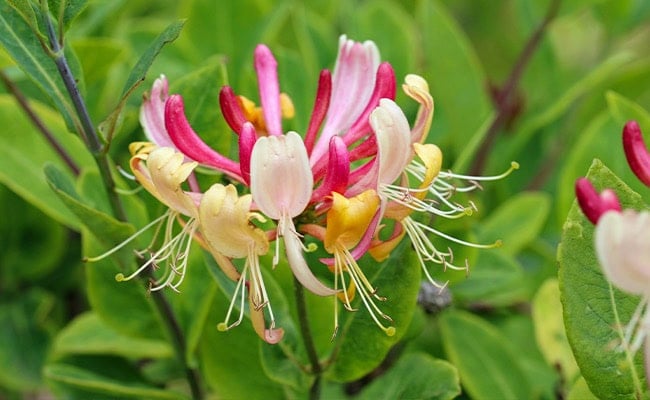
There are more than 180 types of honeysuckle, all of which are native to the Northern Hemisphere, with different varieties found throughout North America, Europe, and Asia. In addition to alluring aromas, honeysuckles also produce abundant nectar, making them a favorite for bees, butterflies, and hummingbirds.
Like roses, honeysuckle also has symbolic meaning connected to love. While not as passionate as roses, honeysuckle can mean affection, happiness, and the sweetness of new love, and the flower has more nostalgic and youthful connotations. As with roses, the color of the flower can add nuance to the meaning, with which evoking innocence and purity, yellow representing friendship, pink having a playful side, and red being more intense love.
A variety of legends surround honeysuckle, such as the Celtic mythology that uses honeysuckle to symbolize a loving or devoted embrace, as honeysuckle vines firmly twine themselves about the plants they use for support. Similarly, in both Chinese and French cultures, honeysuckle represents friendship and the connection between people.
Honeysuckle and rose are both sweet and symbolic options for the June birth month flower, and while the rose may be more prominent, a bouquet of both blooms could be a stunning and highly meaningful gift to celebrate any occasion in June. Which flower would you prefer? Comment below with your thoughts on the rose or preference for honeysuckle!
Join The Discussion
Which June birth month flower do you prefer: rose and honeysuckle or another?
Did anything surprise you about rose symbolism and meaning?
Share your thoughts, tips, and tricks in the comments below!

Melissa Mayntz
Melissa Mayntz is a writer who specializes in birds and birding, though her work spans a wide range—from folklore to healthy living. Her first book, Migration: Exploring the Remarkable Journeys of Birds was published in 2020. Mayntz also writes for National Wildlife Magazine and The Spruce. Find her at MelissaMayntz.com.



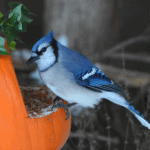
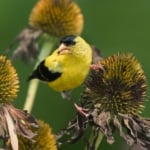

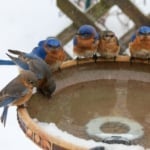
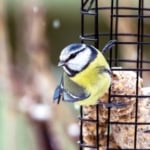
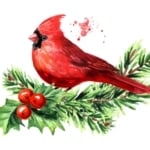
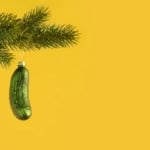
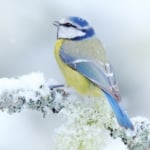
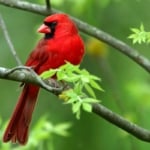
Gostei do seu poste, existe muitos artigos em seu blog relacionado a este que acebei de ler gostei de seu blog.
Oh my gosh! My roses were looking poorly, and I read to put banana water on them. So I added chopped up peels from 3 bananas, added them to a gallon of water, let them sit for a few days, and poured some at the bottom of all 5 roses (different types). The results are amazing! They are all looking healthy and blooming. That was about a month ago. I’m going to make another batch today.
nice